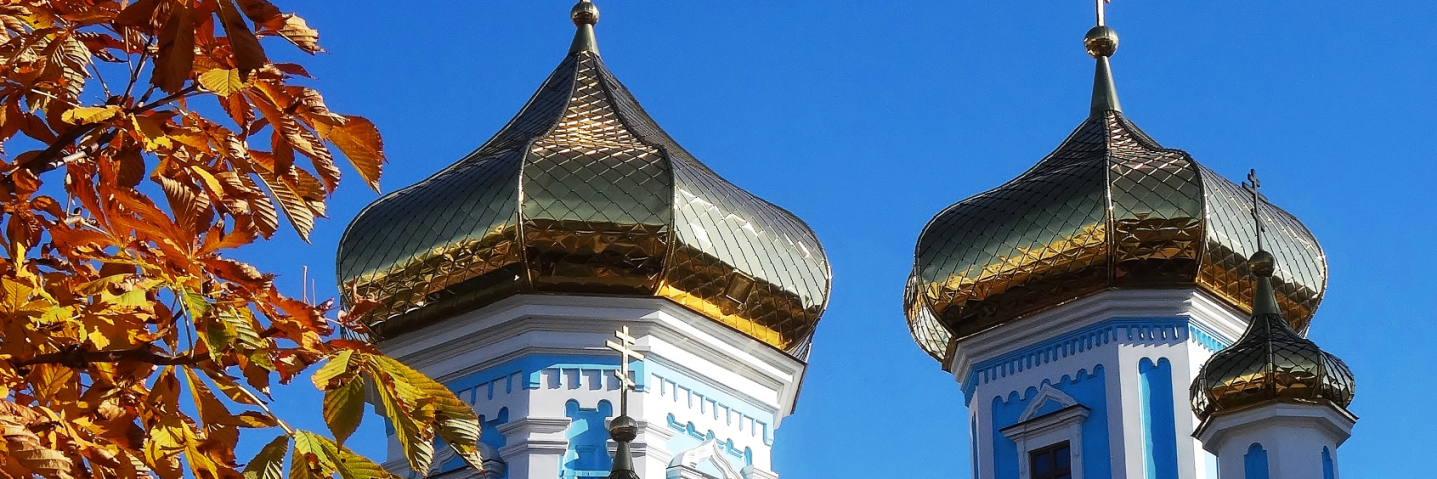
moldova & transnistria
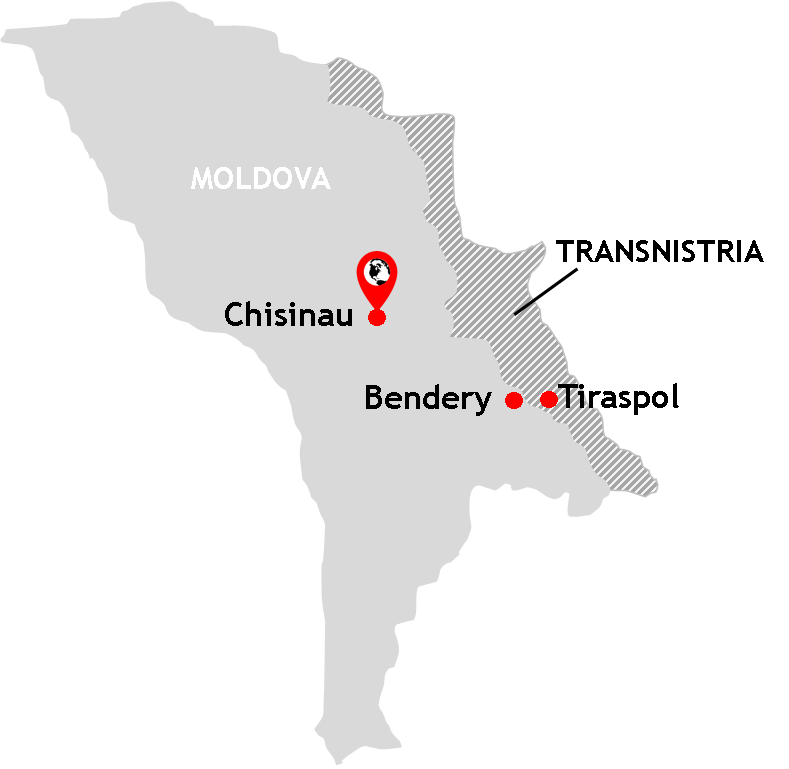
Where: Chisinau, Moldova. Tiraspol and Bendery, Transnistria. Europe.
When: October 2015
Highlights: Being in a country which doesn't exist, Chisinau Hotel, Christ Cathedral and Bell Tower, St Tiron Cathedral, Arc De Triumph, Water Tower, Soviet Circus, Chisinau Railway Station, Communist Era Architecture, Novo Nyametsky Monastery, Bendery Fortress, Tiraspol City Hall, Supreme House of the Soviets, Lenin Statue, St George Chapel, Church of the Nativity.
How: WizzAir flights, Tour guide, Taxis, Airport transfers.
Country Counter: No. 69 and 70
Illnesses or mishaps: Feeling the tension at the border between Moldova and the breakaway state of Transnistria.
Moldova and Transnistria are two of only five countries in Europe I have yet to visit (the others are Monaco, San Marino and Belarus). As far as this continent goes I must say I have a bit of an obsession with Eastern Europe. In my opinion the part of Europe which once resided behind the metaphorical Iron Curtain is a fascinating one. It has a culture and aesthetic all of its own which makes a journey here more than worthwhile. The inscrutable faces of locals often mask a genuine warmth; its monstrous, but equally innovative, concrete buildings hark back to a failed communist system which is simultaneously evocative and melancholy; and the prevalence of security personnel, with a suspicion for anyone foreign holding a camera, exposes the paranoid, psychological hangover from that era. Moldova and Transnistria are the very essence of Eastern Europe distilled into geographically small spaces and are the least-visited countries on the continent.
This was a trip to the very fringe of the continent, two capital cities which elicit only a faint murmur of recognition in the consciousness of most travellers. Consequently, both are a little unprepared for foreign visitors. Any tourist industry found here is almost exclusively geared toward the domestic market. This, however, is advantageous - an opportunity. Rarely visited means authenticity - the chance to experience places without the distorting, and homogenising, effects of mass tourism. Indeed, even the travellers' bible Lonely Planet, in its 480 page Guide to Eastern Europe, offers only a paltry 21 pages for both countries combined. In this Travel Chronicle I hope to go some way to redressing this imbalance and help, in my own insignificant way, to raise the profile of these two very interesting places. A visit to Moldova and a cross-border foray into its bitterly estranged neighbour Transnistria is a journey into an untrodden, and arguably unspoilt, Europe. It was a journey I did on my own and absolutely loved, renting an apartment with a small kitchen in central Chisinau as my base.
moldova
Europe's Least-Visited Country
Sandwiched between Romania to the west and Ukraine to the east, Moldova has the unenviable record of being the poorest country in Europe as well as one of its youngest having achieved full independence in 1991 following the collapse of the Soviet Union. Moldova's independence brought a new flag (the Romanian one but with the Moldovan coat of arms in the centre) and the removal of the Soviet-imposed Cyrillic alphabet in favour of the Latin script. Moldova is also one of the most corrupt countries in Europe, a fact which threatens to leave dead in the water its attempts to join the European Union. Indeed, a protest by communists against government corruption closed roads in the capital during my stay. Communists protesting against corruption? Things must be bad! None of this, however, should put you off travelling here - I left feeling a real affection for the country and its people having had an incredible time here.
Up until this point, I could find no direct flights from the United Kingdom to Moldova - all were indirect and involved more than one airline. A friend's recent trip to Moldova as part of a wider tour got me researching again. The Hungarian airline, WizzAir, was beginning direct flights from London to the Moldovan capital. I seized upon the opportunity and booked myself on their inaugural flight east.
chisinau
My expectations of Chisinau were low; least-visited capital city on the European continent is no record to be proud of. Many capital cities boast superlatives, but Chisinau harbours diminutives. However, it was this record which first intrigued me, never being one to follow the tourist crowd and so often compelled to travel in the opposite direction. On my first morning, the invaluable help of a kind young lady from a travel agent, who took me from kiosk, to post office, to shop and then to book shop, secured me, at a cost of 65p, a tourist map of the capital. A city which had initially intimidated me became instantly navigable. The more I walked, the more I saw and the more I appreciated the city.
Being a solo traveller in a place where travellers do not often go can make you feel rather self conscious. Will people stare at me? Will I get strange looks? Will I irritate the security personnel? Having spent two full days exploring the city on foot I was quickly able to dispense with the paranoia. I would go so far as to say that I was almost invisible to the majority of Moldovans and thus I spent my time wandering around taking photographs of whatever I wanted. My choice of photographic subject sometimes drew the curiosity and, indeed, bewilderment of some passers by, a dumfounded expression appeared on the face of a woman who spotted me photographing an empty concrete planter on the pavement. Of course, beauty is in the eye of the beholder and Chisinau has some incredible examples of the cosmic communist aesthetic. The Moldovan capital is a veritable treasure trove of geometric concrete shapes and communist modernism with which I have become rather fascinated. This is an aesthetic which only a traveller from the west of Europe could appreciate. Contrary to what you may read online, Chisinau is a wonderful place in which to be a traveller. There are the golden onion domes of Russian Orthodox churches, street markets and flea markets, clapped out trolley buses defying the laws of mechanics, coffee shops being run out of the back of vans (and serving the best coffee anywhere), characterful buskers and babushkas, buildings in a state of wonderful fairy-tale decay, wide tree-lined boulevards with Neo gothic, Moorish, Stalinist, Brutalist and everything-ist architecture, humorous graffiti symptomatic of a thriving counter culture... Chisinau was a pleasure to be in - made even more so by the glorious sunshine and blue skies which lit up buildings, and thus my photographs, beautifully, during my time.
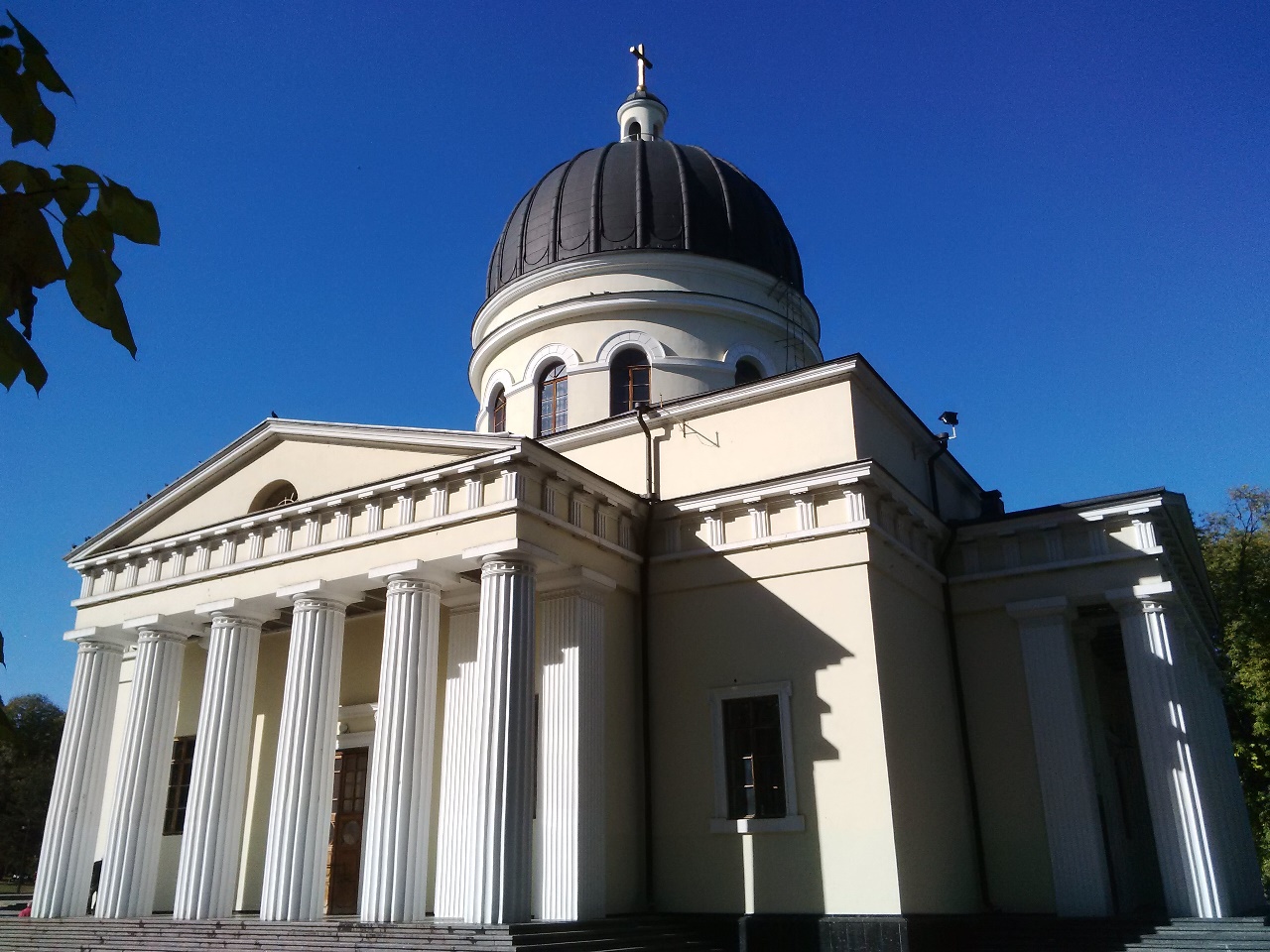
The Birth of Christ Cathedral.
The golden domes of the St Theodore Tiron Convent amid autumn leaves.
Monument to the Liberation with the Chisinau Hotel in the background.
The telecom tower, an apartment block, lamp posts with a cosmic design and uncompromising trolleybus wires all combine to create this picture of wonderful ugliness.
The wonderful geometric balconies of the Hotel Cosmos.
The remarkable Soviet circus. Circus performers from the then Moldavia Soviet Socialist Republic (MSSR) were some of the best in the union resulting in Chisinau being granted its very own circus building.
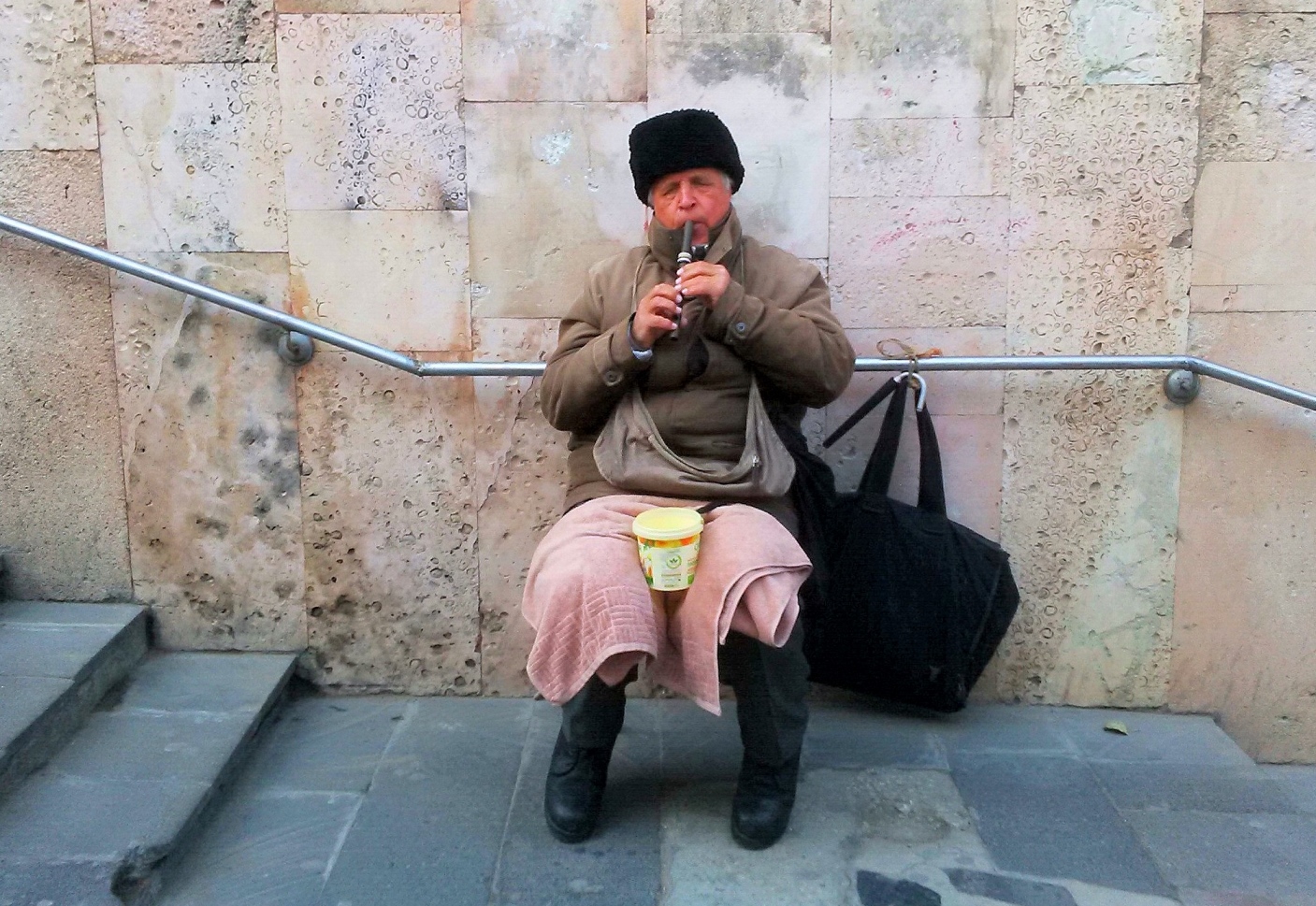
A busker, wearing a characteristic eastern European hat reminiscent of the Soviet age, expertly plays the flute on the stairs down to the subway. And, yes, I did tip him.
transnistria
The Breakaway Country that Doesn't Exist
I first heard of Transnistria from Simon Reeve's BBC TV documentary series Places That Don't Exist (watch here). Transnistria, also called Transdniestr, Trans-Dniester or the Pridnestrovian Moldavian Republic (PMR) is a self-declared breakaway state running along the eastern edge of Moldova seeking full international recognition. Following the collapse of the Soviet Union, Moldova looked west to Europe. Those living on the eastern bank of the Dniester River clung to their linguistic, political and cultural ties with Russia. Thus, in 1990, in an unremarkable theatre in Tiraspol, its de-facto capital city, Transnistria declared independence from Moldova and in doing so triggered a bloody civil conflict. The Transnistrian side of the river held the lion's share of industry and weapons giving the newly-declared state the upper hand. It's worth pointing out here that Moldova itself broke away from Romania back in the 1940s and as far as many Romanians are concerned Moldova is Romanian sovereign territory ("Moldova is Romania" declared one piece of graffiti I saw in Chisinau). Transnistria is, arguably then, a breakaway state of a breakaway state. As far as the international community is concerned, Transnistria is not a country. It's part of Moldova. As far as Moldova is concerned it's part of Moldova. But as far as Transnistrians are concerned theirs is a functioning country with its own currency, passports, flag, police force, army, postal service and laws. So, on this trip, and depending on who you talk to, I either travelled from one country to another or I never left Moldova at all. As a traveller who has a nasty habit of counting his countries, this leaves me with a problem. Transnistria: to count or not to count? That is the question. The small fact of having to show my passport and obtain a visa to enter the territory are surely reasons enough to count Transnistria as my 70th country?
Transnistria's dearth of international recognition means that the kind of consular assistance available to British travellers in an emergency evaporates at the demilitarised zone between Moldova and Transnistria. To put it bluntly, get in to trouble in Transnistria and you're pretty much on your own. After all, how could the British possibly have an embassy or consulate in a country which officially doesn't exist? It is advisable that you secure yourself a reliable guide to show you around. Not only is this sage advice in the circumstances but it also means you'll get added depth to your experience and the Transnistrian perspective on things. My guide came in the form of Andrey Smolenskiy, the owner of Transnistria-tour.com, Transnistria's only tour agency catering to foreign visitors. A staunch advocate of his country and a character as intelligent as you will ever meet, he boomed, in his thick Russian accent, "Let's go to Transnistria!", bursting into a song in Russian about his beloved country as we zoomed towards the Transnistrian capital Tiraspol.
The bumpy road to Transnistria takes just over an hour, its roadsides punctuated by fantastically creative Soviet-era bus stops in all manner of designs. We stopped three times - once for an obligatory toilet stop, once for an obligatory photo of a bus stop and once to pick up some Moldovan "candy" before crossing the border into this paradoxical land.
Entry into Transnistria involves passing through Moldovan police lines, then a line of Russian peacekeepers, and then Transnistrian border guards sporting hammer and sickle-emblazoned uniforms. Crossing the border into Transnistria is the moment the Latin script of the Moldovan language is replaced by the incomprehensible Cyrillic script of the Russian language. It's also the point at which the Moldovan Leu is replaced by the Transnistrian Ruble - a closed currency not available outside of the country. On changing my Euros at a currency desk in a Sheriff store, it took Andrey to point out that what I thought were some sort of plastic tokens or chips for exchanging money were the money. Never before has the pejorative "Monopoly money" been more apt than in Transnistria.
Online chatter is awash with tales of Transnistrian border guards shaking down travellers for bribes and of laborious visa forms needing to be completed in triplicate. I braced myself... Obviously, things have improved since these travel tales of woe were written. My visa card took seconds to fill out - and it was done by the border guard, not me. It was electronically printed and came in the form of a single slip of paper not unlike a supermarket receipt. On my return journey on the marashrutka, a public minibus travelling from Tiraspol back to Chisinau, instead of being shaken down for a bribe by the border guard, I got a joke in broken English with a thick, heavy Russian accent: "Ha, English rugby bad, ha ha." Perhaps Transnistria has cleaned up its border act aware that greater international acceptance is more likely to be forthcoming when corrupt border guards have been replaced by ones with a bad sense of humour? Infinitely preferable in my opinion. Being a little jumpy travelling through this border on my own in the failing light, I was appreciative of his joke nonetheless.
tiraspol
Far from being an austere place populated by watchful KGB officers, decaying buildings and the glum faces of an oppressed population, Tiraspol was bright, clean and dreamily tranquil. Shops gently hummed with activity, school kids excitedly skipped alongside their teachers on historical outings, well-maintained buildings bristled in the autumn sunshine and young people were dressed as fashionably as any I had seen back in Moldova. Everything seemed, well, normal. Where was this weird place stuck in a communist time-warp I had read so much about? It is clear that, where Transnistria is concerned, there is a lot of hyperbole written. However, I am not so naïve as to think that there are not grains of truth in the cautionary tales I had read...
I was not able to take a photograph of the Transnistrian parliament building which is given the rather grandiose name of The Palace of Supreme Soviets: "It is forbidden to photograph the building but you can photograph Lenin" warned Andrey. The Lenin statue was directly in front of the building in question. "But that's impossible" I said. "I know, but it is the law" he replied. The photo I took ended up being a bit off centre and blurred - not because of poor photography skills you understand, but because I was being watched. Perhaps I was becoming paranoid? A hard day's sightseeing in a country which doesn't exist requires a hearty meal. Andrey recommended a restaurant called Mafia. Media reports of Transnistrian corruption, money laundering, weapons and drug smuggling resurfaced in my mind... but quickly evaporated when I tasted the pizza - the best I'd had in a long time!
I was lucky enough to visit in 2015 as the country was celebrating its first twenty five years. In Tiraspol red banners dangled from buildings, and hoardings sporting the unmistakable communist symbolism of Soviet times lined wide boulevards celebrating this crucial Transnistrian anniversary. Whilst statues of Lenin and hammer and sickle symbols remain in tact - revered even, they nevertheless seem hypocritical and at odds with Transnistria's reality: rampant capitalism where everything is up for sale. Despite all appearances, Transnistria is no communist idyll but a contradictory mix of borrowed, dated symbols and brute market forces with a murmuring undercurrent of socialism. I found these elements difficult to reconcile...
However, a little more careful thought I realised the real reason behind this uniquely Transnistrian concoction. Clearly, unlike so many other former communist countries, Transnistria chooses not to delete its past, chooses not to shamefacedly sweep its heritage under the twenty first century carpet of capitalism. Instead, it retains its symbols, its statues and its place names - so unlike Latvia, Georgia and Bulgaria, for example, where the hammer and sickle symbol has been sand-blasted off from the facias of buildings and where red star tops have been relegated to indoor museums. I am rather glad Transnistria has this approach otherwise there would be nothing left for me to photograph. Retaining its historical links gives Transnistria an air of continuity where others have opted for discontinuity and discombobulation. Arguably, transition and progress comes from taking your past with you, not killing it off and pretending it never existed.
Some travellers head only to Transnistria because of its quirky value - basically, to be able to say they've been in a place that doesn't exist. It certainly has a poetic quality. This, however, is to underestimate the beauty that can be found here. Sure, there's the absurdity of standing in a country which 'doesn't exist' but, as these photographs testify, there are some pretty wonderful things to see. The fact that they are in a place mired in so much controversy, with an added hint of menace, only adds to their allure. There are the golden onion domes of Russian Orthodox churches and chapels, the graceful Tiraspol City Hall built in the Stalinist style and you can also travel on what is, perhaps, the most rudimentary car ferry anywhere in Europe, comprising of a single floating deck, a metal cord, two men - and a dog. Welcome to Tiraspol, capital of the break-away, renegade Republic of Transnistria and my 70th 'country'.
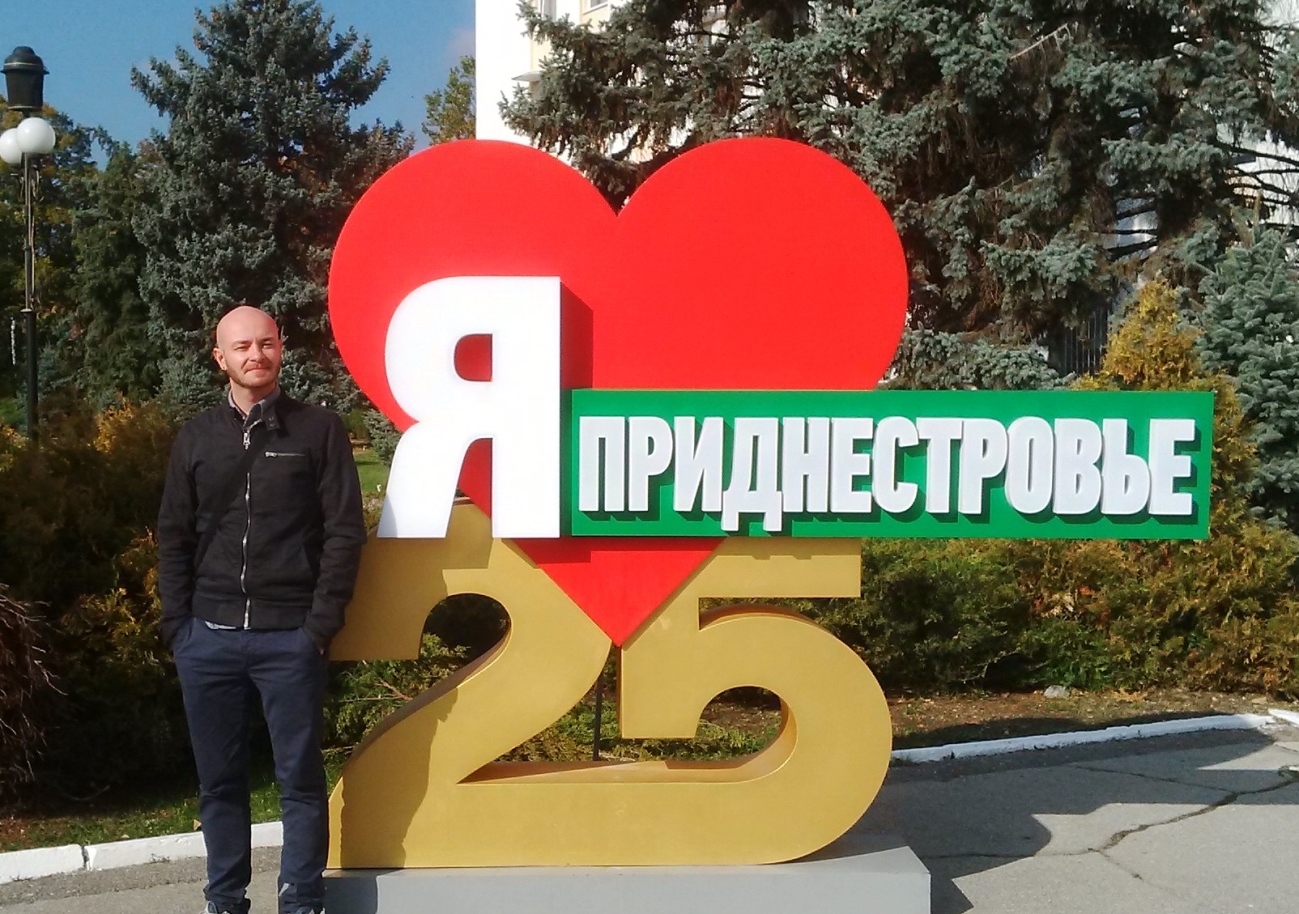
Standing in front of one of Transnistria's celebratory three-dimensional displays heralding its first 25 years. The sign reads "I heart Transnistria 25".

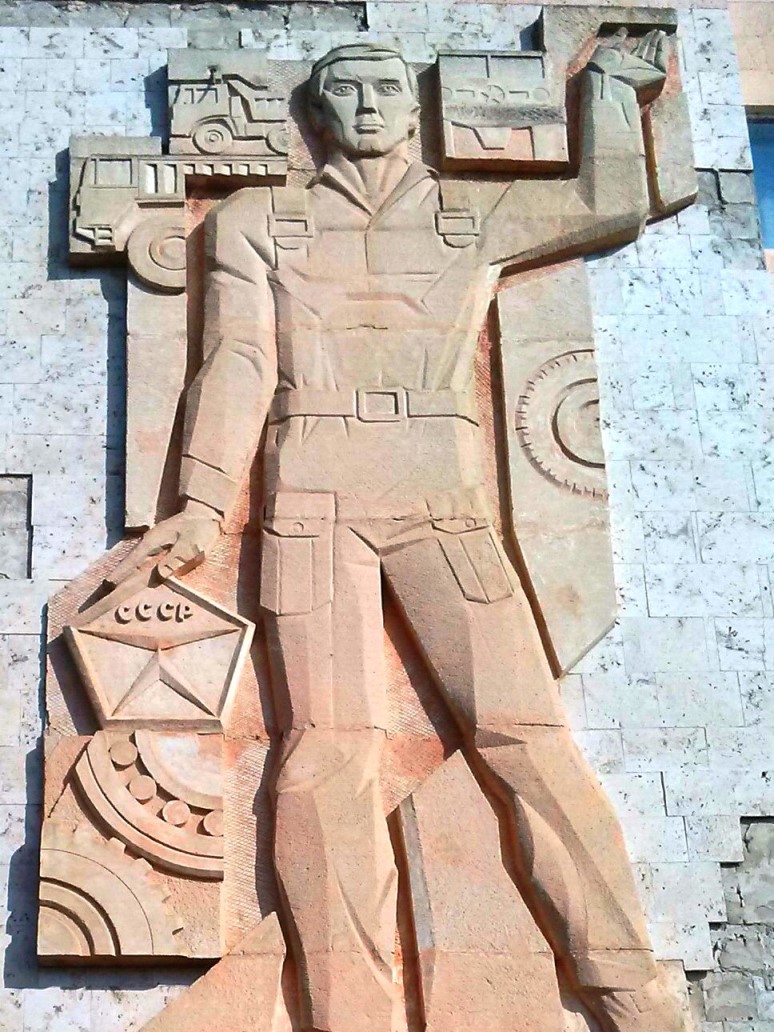

Soviet Tiraspol: a hammer and sickle sculpture; a CCCP relief on the wall of a factory; a red banner celebrating Transnistria's 25th Anniversary.
Tiraspol City Hall built in the Stalin Palace style. Front and centre is a revered bust of Lenin himself.
The iconic and wonderful St George Chapel on the Memorial of Glory Square.
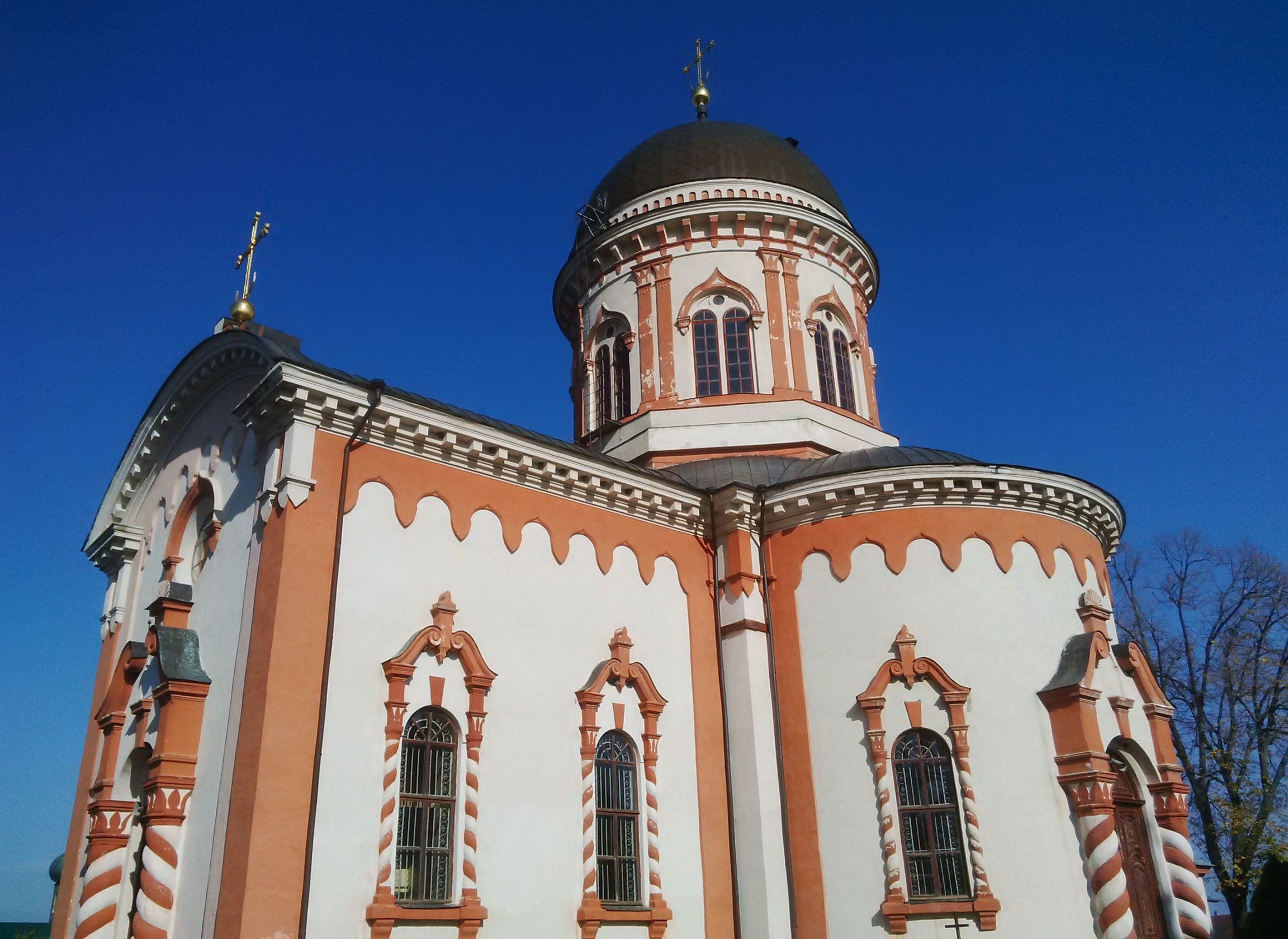
Holy Ascension Novo-Nyametsky Monastery.

The grand entrance of an Orthodox cathedral in central Tiraspol. One problem with Transnistria is, because so few people travel here, it is difficult to track down the names of things online. Therefore, the name of this rather stunning sight remains unknown to me at present.
bendery
Bendery is in a demilitarised buffer zone on the western bank of the Dniester River between Moldova and Transnistria. Travelling here, outside of Tiraspol the capital, gives you a chance to soak up the region's classic history. There is the dramatic Ottoman fortress at Bendery. Until recently, the 16th Century fortress was off limits to the public, as it was home to a functioning Russian army base. Indeed, during my visit I did notice a number of khaki-clad army officers as I ascended the steps to the viewing turret. The beautiful Novo Nyametsky Ascension Monastery is nearby, home to a collection of elegant religious buildings and monks quietly going about their duties.
After all that Soviet stuff, it's nice to have a bit of history. Bendery Fortress.
travel tips, links & resources
- Organise a tour with pmr-tours.com to be sure of getting a local perspective on things in Transnistria. I had a great day tour experience with the owner of the tour company, Andrey Smolenskiy, who combined the Soviet Tour and Classic Tour.
- Make sure you avoid taking any photographs at the Moldova / Transnistria border. I normally sneak a shot of my border crossings but on this occasion chose not to take the risk.
- If you're intending to shop or eat in Transnistria be sure to take Euros or US Dollars with you to change at a kiosk. Moldovan Leu are not accepted in Transnistria - except to pay for a bus ticket back to Moldova.
- Most travellers visit Transnistria for the day on a ten hour visa. Your visa will have an expiration time on - you must be out of the country by then. Check the return bus times - the last one back to Chisinau was around 6pm.
- Give Chisinau a couple of days on your itinerary - it is a lovely city to wander around in and perfect for a city trip.
- Obtaining a tourist map, or 'harta touristica', is hard in Chisinau. Try to obtain one before you leave.
you may also like
